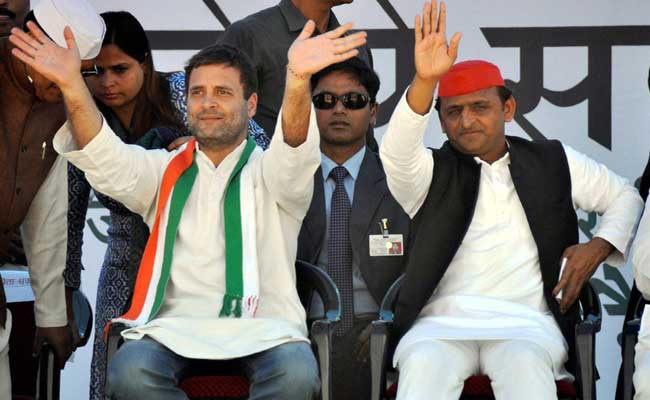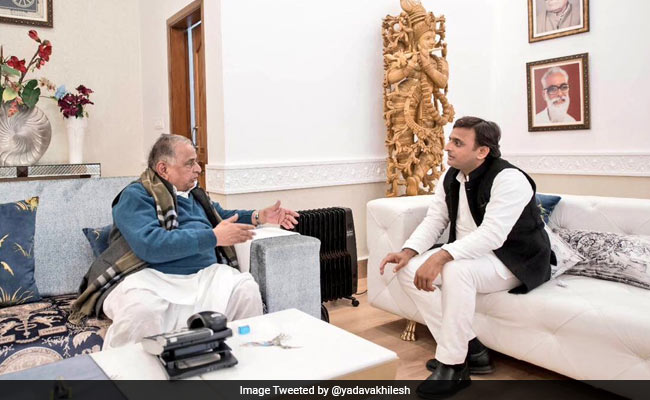Prime Minister Narendra Modi and party president Amit Shah have created an unbeatable election-winning spree, a record that probably this duo alone can break. In fact, the 2019 national election seems to be one-sided with no challenger for Modi.
The 2014 election witnessed a phenomenal change signalling the beginning of a new era in Indian politics. While the pre-1947 generation had stepped into their 70s, the new generation of young voters had lined up outside polling booths, voter card in hand and aspiration in their hearts. Modi was quick to read their minds and spoke the language they understood. In speech after election speech, he promised to work to fulfil their dreams. "Together, we can" was his promise. The Nehruvian generation reposed their trust and faith in Nehru, voted him to power, but sat back and relaxed expecting him to deliver the spoils of newly-acquired freedom on a platter.
The 2014 generation was different. They expected the government to do its job and provide a corruption-free atmosphere. The ten years of UPA was infamous for massive scams and policy paralysis; it collapsed under the weight of its own acts of omission and commission (pun intended). The youth of the country voted for Modi, a dynamic leader, excellent communicator and above all, a transparent person.

BJP decimated the Samajwadi Party-Congress in Uttar Pradesh
Beside reading the mind of voters correctly, Modi had a few more advantages like personal integrity and credibility, dedicated and disciplined cadre, and above all, a totally discredited and fragmented opposition.
Akhilesh Yadav began his tenure on a strong note and promised to emerge as another regional leader like Nitish Kumar. But his own family, none other than his father and uncle, proved to be his nemesis. By the time he could regain his balance, the damage was done. The Yadav vote bank was woefully divided and ready to quit the sinking ship. As if this tragedy were not enough, Akhilesh invited another catastrophe in the form of a coalition with the Congress and ensured his electoral debacle.
The 77-year-old Samajwadi Party patriarch Mulayam Singh Yadav, three time Chief Minister of Uttar Pradesh, said unhesitatingly, "Gathbandhan nahi hota toh Samajwadi ki sarkar banti (had there been no coalition, SP would have formed the government)." In fact, he had publicly opposed the alliance. "Congress ko yahan koi pasand nahi karta (no one likes Congress in UP)". The fact is that SP defeated the Congress, BJP and the BSP in 2012 and formed the government.

Mulayam Singh Yadav had warned Akhilesh against partnering with Rahul Gandhi
On their part, the Congress played a safe game and sensing total defeat, withdrew Priyanka Vadra, considered the party's ace card, from the campaign. The party strategists, if any, thought it unwise for her to start in politics with a failure. In this way, they accepted not just total decimation but also the political end of Rahul Gandhi. The only set of people eager to prop up Rahul Gandhi as the President of the Congress are probably the spin doctors of the BJP, and for obvious reasons.
The Bahujan Samaj Party was expected to cut into BJP votes and garner Muslim votes to emerge as the winner, but they got their script wrong from the beginning. Mayawati had no definite agenda to woo the non-Dalits and Muslims, thus making her irrelevant for the third time. In the ruthless political arena of Indian politics, no one who has lost three consecutive elections has survived for the next round.
The electoral victory for the Congress, albeit pyrrhic, came from Punjab, where the party could project the Akali Dal (SAD) as a poor performer and the root cause of the drug menace. Perception plays an important role in politics and the Akali-BJP coalition could not find an alternative narrative to be third time lucky. For the faction-ridden Congress (Amarinder Singh actually threatened to quit and form a new party), which significantly, even during the 2014 washout, polled 33% votes, the troubles are just beginning as the Chief Ministerial candidate has Sidhu and half a dozen more breathing down his neck.

The BJP took 312 of the 403 assembly seats in UP and its allies another 13 seats; in Uttarakhand, it won 57 of the 70 seats
The 2017 Assembly election results are very important pointers for 2019 election. In all likelihood, the BJP will manage to win Gujarat and Himachal Pradesh next year. Of the other two national parties, the CPM and CPI clubbed as the Left are already relegated to the last page of history books. That leaves only the shrinking Congress, still in the grip of Gandhi family, waiting to be presided over by Rahul Gandhi with his abysmal track record. It is unlikely that any party will ever want to tie up with the Congress unless the party throws up a non-Gandhi parivar leader, which is very unlikely.
There will be many attempts to put together an anti-BJP/Modi coalition. But such a coalition will have no credibility or a central rallying point. Without a credible positive agenda, such a coalition is not likely to appeal to the voters. None of the state-level parties will accept Rahul Gandhi as their leader and transfer their vote bank to the Congress. The Congress party may also witness a split like in the late 60s.
With the rolling out of the GST, the Make in India programme may gain speed and bring unemployment under control. With a comfortable majority, Prime Minister Modi will be better placed to speed up economic and capital reforms for endogenous growth. A good monsoon and more agro-friendly policies by the Modi government will make it easier for the BJP to increase its seats in Lok Sabha in 2019.
(Seshadri Chari is National Executive member of the BJP)
Disclaimer: The opinions expressed within this article are the personal opinions of the author. The facts and opinions appearing in the article do not reflect the views of NDTV and NDTV does not assume any responsibility or liability for the same.


